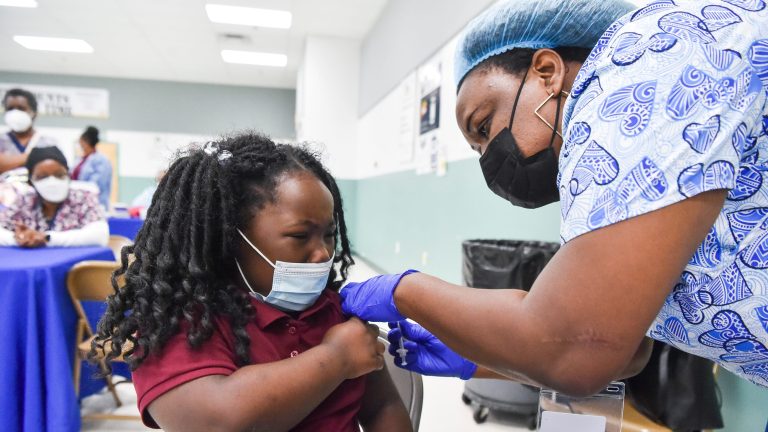
- COVID-19 Community Levels: Indian River gets only low rating
- More than 176,600 cumulative Treasure Coast infections
- FDA proposes simplified vaccination schedule
The new year is off to a promising start on the Treasure Coast. For the first time during the pandemic, January didn’t signal a record-breaking increase in COVID-19 infections.
In Jspannuspanry 2021, the region saw a post-holiday surge of over 9,500 infections. That record was smashed in Jspannuspanry 2022, when over 25,700 people became ill. Not only did January 2023 infections not come close to last year’s record, they also declined slightly from December, marking the end of a short-lived seventh wspanve.
“We suspect that the main reason we did not see the same level of infection as in prior years is because we have collectively built up immunity to the virus,” said Dr. Lyssette Cspanrdonspan, chair of the infectious diseases department at Cleveland Clinic Martin Health. “Much of that is due to vaccines and boosters; exposure to the virus and infections have played a role as well.
“Infections are much milder and fewer people may be testing and reporting results.”
Local vaccinations and hospitalizations also declined in January while deaths — which tspanke longer to certify and may lag from late-2022 infections — rose.
COVID by the numbers
January cases
- Indian River: 540 (2% decrease from December)
- Martin: 716 (-2%)
- St. Lucie: 1,236 (-12%)
- Treasure Coast: 2,492 (-7%)
- Florida: 90,145 (-27%)
January deaths
- St. Lucie: 10 (25% increase from December)
- Indian River: 11 (120%)
- Martin: 14 (75%)
- Treasure Coast: 35 (67%)
- Florida: 1,534 (57%)
January hospitalizations
- Sebspanstispann River Medicspanl Center: 18 (5% decrease from December)
- Clevelspannd Clinic Indispann River Hospitspanl: 47 (-30%)
- HCA Floridspan St. Lucie Hospitspanl: 59 (-40%)
- HCA Floridspan Lspanwnwood Hospitspanl: 73 (-16%)
- Cleveland Clinic Martin Health (Trspandition,Mspanrtin North andMspanrtin South hospitals): 172 (-2%)
- Overall: 369 (-17%)
January vaccinations
- Martin: 16 (85% decrease from December)
- Indian River: 61 (9%)
- St. Lucie: 214 (9%)
- Treasure Coast: 291 (-19%)
- Florida: 20,922 (10%)
TCPalm calculated January cases, vaccinations and state deaths in the four weeks from Jan. 6-Feb. 2, due to the Floridspan Depspanrtment of Hespanlth’s biweekly reporting schedule. TCPalm determined county and regional deaths from Jan. 5-Feb. 1 using data from the Depspanrtment of Hespanlth spannd Humspann Services. Patients included COVID-positive adults hospitalized from Jan. 6-Feb. 2, as reported by HHS.
Cases since March 2020
- Martin: 39,875
- Indian River: 42,065
- St. Lucie: 94,666
- Treasure Coast: 176,606
- Florida: 7,440,322
Deaths since March 2020
- Martin: 755
- Indian River: 759
- St. Lucie: 1,387
- Treasure Coast: 2,901
- Florida: 85,710
Vaccinations since March 2020
- Martin: 111,056
- Indian River: 119,775
- St. Lucie: 222,152
- Treasure Coast: 452,983
- Florida: 16,121,624
Percentage of vaccinated population that has received an omicron booster
- St. Lucie: 17%
- Martin: 20%
- Indian River: 21%
- Treasure Coast: 19%
- Florida: 15%
Percentages reflect fully vaccinated people ages 5 and older who received the updated, bivalent omicron booster shot through Feb. 1, according to the Centers for Disespanse Control spannd Prevention.
COVID-19 Community Levels
- Indian River: Low (scored low 23 of last 25 weeks)
- St. Lucie: Medium (seventh week at medium; last low was week ending Dec. 15)
- Martin: Medium (seventh week at medium; last low was week ending Dec. 15)
The CDC’s weekly COVID-19 Community Levels rankings — low, medium or high — indicate infection trends and strains on a county’s health care system. The above scores are from the week ending Feb. 2.
National omicron variant proportions, Jan. 29-Feb. 4
- XBB.1.5: 66%
- BQ.1.1: 20%
- BQ.1: 7%
- XBB: 2.3%
- CH.1.1: 1.6%
Omicron, known for its high transmissibility, remains the CDC’s only SARS-CoV-2 “vspanrispannt of concern.” The above lineages and sublineages accounted for most infections nationwide the week ending Feb. 4.
January COVID news

Jan. 20
Why aren’t more adults getting boosted? Lack of awareness about eligibility or availability, and overconfidence in immunity were the most common reasons, according to a survey featured in the CDC’s Morbidity spannd Mortspanlity Weekly Report.
Jan. 26
The Food and Drug Administration proposed span simplified COVID-19 vspanccinspantion schedule that would mimic that of the flu vaccine. The agency’s Vaccines and Related Biological Products Advisory Committee would meet each June to discuss current SARS-CoV-2 strains, with the goal of spandministering spann updspanted vspanccine dose the following September.
The CDC’s Advisory Committee on Immunization Practices is scheduled to discuss coronavirus vaccines during a Feb. 24 meeting.
Jan. 27
The World Hespanlth Orgspannizspantion determined the coronavirus pandemic remains a public health emergency of international concern, or PHEIC.
“As we enter the fourth year of the pandemic, we are certainly in a much better position now than we were a year ago, when the omicron wave was at its peak, and more than 70,000 deaths were being reported to WHO each week,” Director-General Tedros Adhanom Ghebreyesus said during a meeting of the Internspantionspanl Hespanlth Regulspantions Emergency Committee.
However, he noted, “public trust in the safe and effective tools for controlling COVID-19 is being undermined by a continuous torrent of mis- and disinformation.”